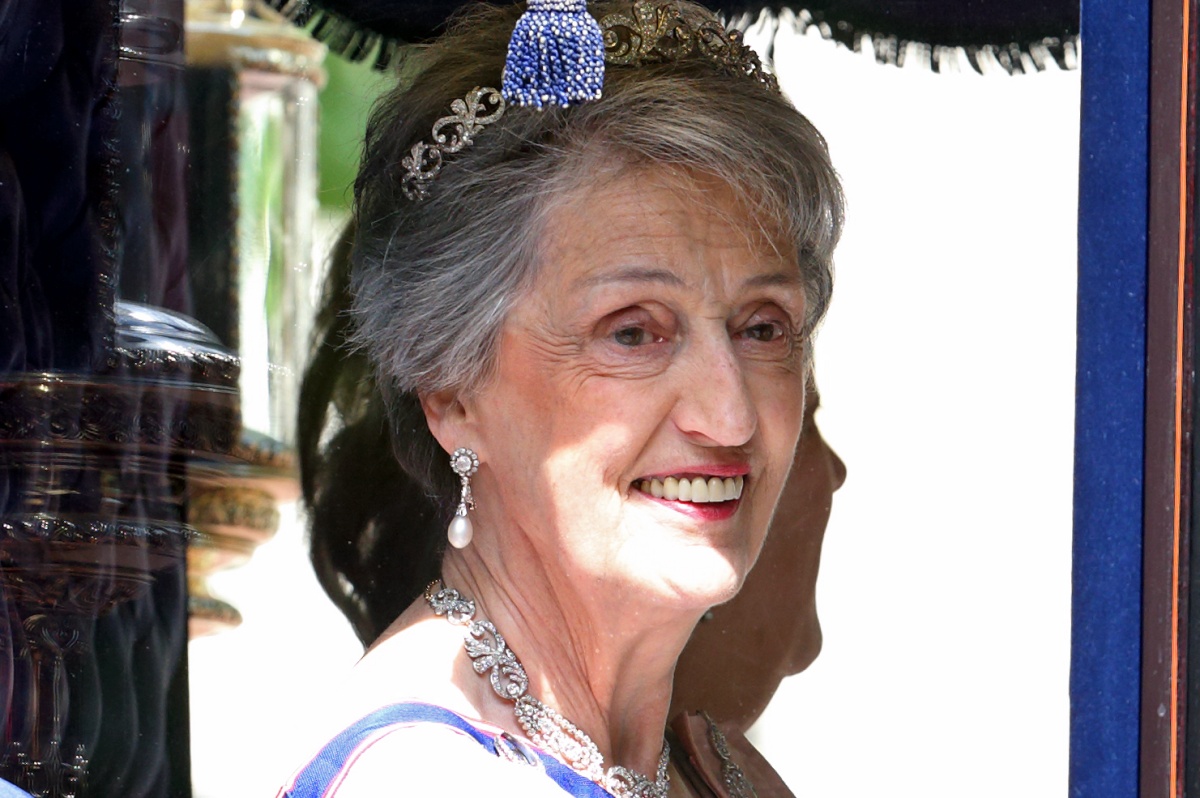The Buckingham Palace Racism Scandal, Explained
Who is Lady Susan Hussey?

Prince William and his wife Catherine were at the end of completing their first U.S. visit in eight years when two scandalous bombs were dropped: An anti-terror expert validated the far-right racist threats against Meghan Markle and Prince Harry, and Lady Susan Hussey, Prince Williams’ godmother, was soft-fired from her role in the palace following accusations of racist behavior.
What happened? Well, according to Ngozi Fulani, the chief executive of the domestic abuse charity Sistah Space, she was at a reception at Buckingham Palace on Tuesday. When Hussey approached Fulani, she repeatedly asked where she was from, and moved Fulani’s hair in order to see Fulani’s name tag. The information was shared in a tweet that went viral and then swiftly saw Hussey “retire.”
Hussey, who was even portrayed in the latest season of The Crown, was the queen’s longest serving lady-in-waiting and held the unpaid title of “Woman of the Bedchamber” and “Head Girl” (which the internet had a field day with). I was made familiar with the figure when I listened to Tina Brown’s The Palace Papers, which stated the following about Hussey:
The Queen, determined not to fail Meghan as it was privately recognized Diana had been failed, offered Meghan the ear of her most senior lady-in-waiting, Lady Susan Hussey, a wily court infighter who had been around since 1960, and Samantha Cohen, a brisk Australian Palace veteran who was the monarch’s most trusted communications aide, and who agreed at the Queen’s personal request to return from the private sector specifically to support the new Duchess’s learning curve.
Brown, Tina. The Palace Papers (p. 531). Crown. Kindle Edition.
This, of course, only seems to prove that the racial discomfort Meghan Markle may have felt is even more valid than the Firm might like to think.
There has been some “discourse” about whether’s Hussey’s “firing” was right at all, with some claiming she was in her 80s—as if Black and Brown people in their 80s didn’t experience racial abuse. It is an absurd protection of a woman who is mainly just a royal insider.
Mandu Reid, one of the witnesses of this event, spoke to The Guardian about how the aftermath unfolded and how it felt unsatisfactory:
“Unlike when the Duchess of Sussex made her accounts of royal racism, such as the “concerns” that were expressed over how dark her son’s skin might be, the palace wasn’t able to deny or deflect this time,” Reid wrote. “It couldn’t rerun the famous line that “recollections may vary”, because three of us have identical, and identically uncomfortable, recollections of that encounter.”
She added: “The funny thing is, neither Ngozi nor I wanted Hussey to receive the grand order of the boot. Ngozi didn’t even name her publicly; it was social media that did this, immediately seizing on the story as another chance to form into polarised rival camps. Instead of stepping down, Hussey should be encouraged to step up, along with senior members of the royal household. This is much bigger than one individual: blaming Hussey risks minimising and distracting from the depth and breadth of racism that is enshrined in an institution that carries the heritage of empire, slavery and inequality (we are their subjects, after all).”
King Charles III is the first British monarch with a mixed-race daughter-in-law and grandson. If he wants to be an instrument of change, it is time for him to acknowledge the systematic issues in the palace and change them. The issue of race and the royals is never going away; Meghan Markle fundamentally changed that. Getting rid of one antiquated member of the staff isn’t going to change a culture that thinks its okay to touch a Black woman’s hair or ask repeatedly where her family is from.
(via WaPo, image: Max Mumby, Indigo / Getty Images)
Have a tip we should know? tips@themarysue.com